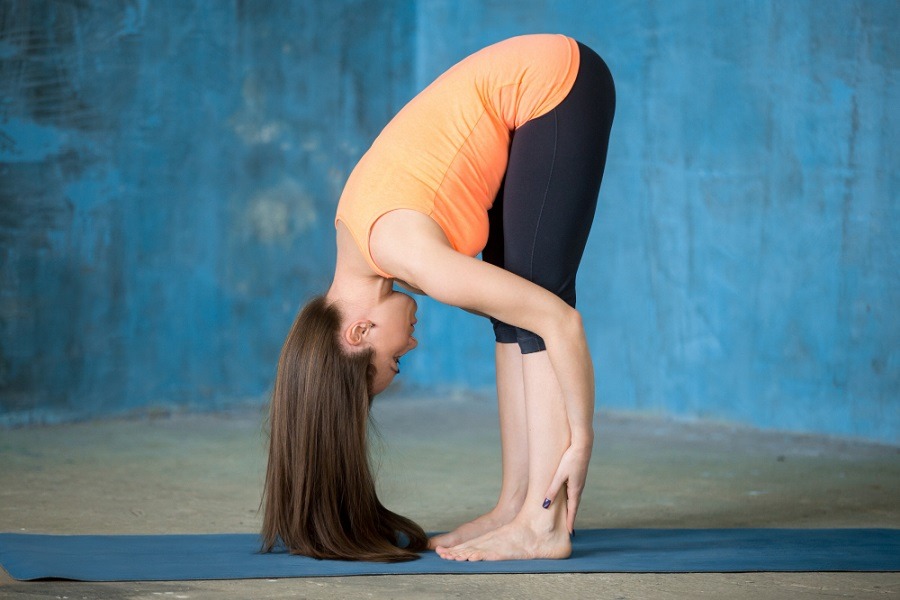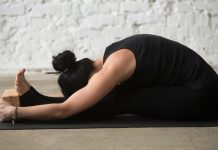
Yoga, an ancient practice that harmonizes the mind, body, and spirit, offers a plethora of postures or asanas to achieve physical and mental well-being. One such pose is the Standing Forward Bend, also known as Hastapadasana. This fundamental standing forward fold offers numerous health benefits while being accessible to practitioners of all levels. In this article, we’ll explore the essence of Hastapadasana, how to perform it correctly, and the advantages it brings to our overall health.
The Meaning of Hastapadasana:
Hastapadasana, derived from Sanskrit, consists of two words: “hasta” meaning “hand” and “pada” meaning “foot,” and “asana” meaning “pose” or “posture.” As the name suggests, it involves a forward bend where the hands try to reach the feet, thus encouraging flexibility and deep stretching.
Steps to Perform Hastapadasana:
To achieve the Standing Forward Bend, follow these steps:
1. Starting Position: Begin by standing straight with your feet together, arms alongside your body, and shoulders relaxed.
2. Inhale: Take a deep breath and elongate your spine, lifting your chest up.
3. Exhale: Slowly start to bend forward from your hips, keeping the spine long and engaging the core muscles. As you fold forward, maintain a straight back rather than rounding the spine.
4. Hands Placement: Bring your hands down to the floor beside your feet. If your hands don’t reach the floor comfortably, you can bend your knees slightly or place your hands on your shins.
5. Head and Neck: Relax your head and neck, allowing them to hang freely. If possible, try to bring your forehead towards your shins.
6. Breathing: Hold the pose while breathing deeply and evenly. With each exhale, try to deepen the stretch by bringing your chest closer to your thighs.
7. Duration: Stay in the pose for 30 seconds to a minute, or longer if comfortable.
8. Release: To come out of the pose, engage your core muscles and inhale as you slowly rise back up to the standing position. Keep your back straight while returning to avoid strain.
Health Benefits of Hastapadasana:
1. Spine Flexibility: Hastapadasana stretches the entire back and spine, making it more flexible and supple. It helps in relieving tension in the back muscles, reducing the risk of backaches and discomfort.
2. Improves Digestion: The forward bending nature of this asana massages and stimulates the abdominal organs, thus enhancing digestion and relieving constipation.
3. Reduces Anxiety and Stress: As a forward fold, Hastapadasana has a calming effect on the nervous system, promoting relaxation and reducing anxiety and stress levels.
4. Stimulates Blood Circulation: The inversion created by the pose allows for better blood flow to the brain, eyes, and facial muscles, which can improve concentration and mental clarity.
5. Tones Leg Muscles: This asana stretches and strengthens the hamstrings, calves, and thighs, providing stability to the legs.
6. Therapeutic for Menstrual Discomfort: For women, Hastapadasana can help alleviate menstrual discomfort and provide relief from menstrual cramps.
7. Reduces Fatigue: Practicing Hastapadasana helps to rejuvenate the body and mind, reducing fatigue and lethargy.
Precautions and Contraindications:
- Individuals with back injuries or spinal issues should perform this asana with caution and under the guidance of a qualified yoga instructor.
- If you have high blood pressure or glaucoma, avoid holding the forward bend for an extended period and come up slowly.
- Pregnant women should bend their knees slightly while performing this asana to avoid excessive pressure on the abdomen.
Hastapadasana, the Standing Forward Bend, is a valuable addition to any yoga routine, offering a wide range of health benefits for the body and mind. Whether you are a seasoned yogi or a beginner, incorporating this pose into your practice can help you experience improved flexibility, reduced stress, and enhanced overall well-being. Remember to approach the asana mindfully and consult a yoga instructor if you have any health concerns. So, embrace the forward fold and take a step closer to a healthier and more balanced life!











































